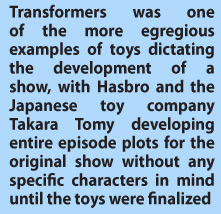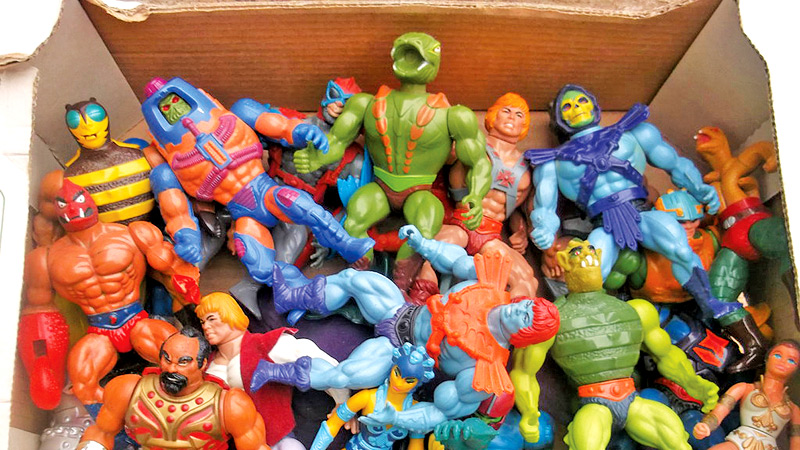Modern media franchises are no strangers to merchandising, it is practically an essential part of it, symbiotically woven into any one media’s production cycle. However, it is rarer today for franchises, even massive global ones, to be created almost exclusively for the purposes of merchandising, existing only to sell their product to audiences, typically toys marketed towards children.
 Some of the most egregious examples of this practice are with the Transformers franchise and most Mattel-associated media.
Some of the most egregious examples of this practice are with the Transformers franchise and most Mattel-associated media.
Though being merchandise-driven is generally a predatory practice that leaves its connected shows narratively weaker for it, it can sometimes be a positive influence, for the franchise and its audiences.
Predatory advertising practices
Though merchandising, or even toy advertising isn’t exactly a new concept, the potential peak of targeted advertising through television was only possible for a narrow period of time in the 80s in the USA thanks to sweeping deregulation during the Reagan administration.
 This also meant repealing regulations for children’s TV programming, previously put in place to protect children from predatory advertising practices that took advantage of how difficult it is for them to recognise when they are being advertised to.
This also meant repealing regulations for children’s TV programming, previously put in place to protect children from predatory advertising practices that took advantage of how difficult it is for them to recognise when they are being advertised to.
Almost immediately, there was an explosion of new toys, food brands, and cartoons aggressively advertising directly to children. One of the pioneers of this practice was Mattel, who had already shown an early interest in this avenue of advertising, with their 1969 cartoon for the pre-existing Hot Wheels toyline.
This attempt was quickly squashed by the FCC, who classified it, and other shows like it, as a “thirty-minute toy commercial”. Post deregulation, Mattel had free reign to spawn massive, and iconic multimedia franchises out of their toy lines, such as Hot Wheels, Barbie, and the Masters of the Universe.
This instant success led to Mattel becoming the de facto company for licensed toy merchandising, working highly lucrative deals for some of the biggest media companies, such as Disney, and DC Comics.
 Another giant of the merchandising game was Hasbro, who also created some of the biggest franchises still beloved by fans of all ages today. Such as GI Joe, the quintessential action figure cartoon, and, more notably, Transformers, which is currently a multi-billion dollar multimedia franchise.
Another giant of the merchandising game was Hasbro, who also created some of the biggest franchises still beloved by fans of all ages today. Such as GI Joe, the quintessential action figure cartoon, and, more notably, Transformers, which is currently a multi-billion dollar multimedia franchise.
Transformers was one of the more egregious examples of toys dictating the development of a show, with Hasbro and the Japanese toy company Takara Tomy developing entire episode plots for the original show without any specific characters in mind until the toys were finalized.
Paper-thin development
This led to the creation of legions of characters with paper-thin development or exploration. However, this ended up being quite successful, with most fans embracing the merchandise-driven nature of it.
If a new Transformers character doesn’t yet have an associated toy, modern fans, a significant portion of whom are adults who grew up with the franchise, would actively clamour for one to be made.
Thanks to the efforts of lobbying groups, the Children’s Television Act (CTA) of the 90s and subsequent regulations kept these kinds of shows in check, greatly reducing the predatory potential they had in influencing children.
Today, merchandising is still a vital part of any media franchise’s production, but its development is usually never completely dictated by it. Many of the franchises that rose in the deregulation era, such as Transformers, TMNT, and My Little Pony have evolved to suit the times, creating strong franchises on their own merits, with merchandise only being a significant part of it, and not the entire point.
More modern franchises such as Pokemon, and Yu-Gi-Oh! have also shown great examples of blending merchandising with their media, without being the sole driving force, though not always done perfectly. As things are, it is up to the consumers to be aware of predatory practices of merchandise marketing and advertising.









